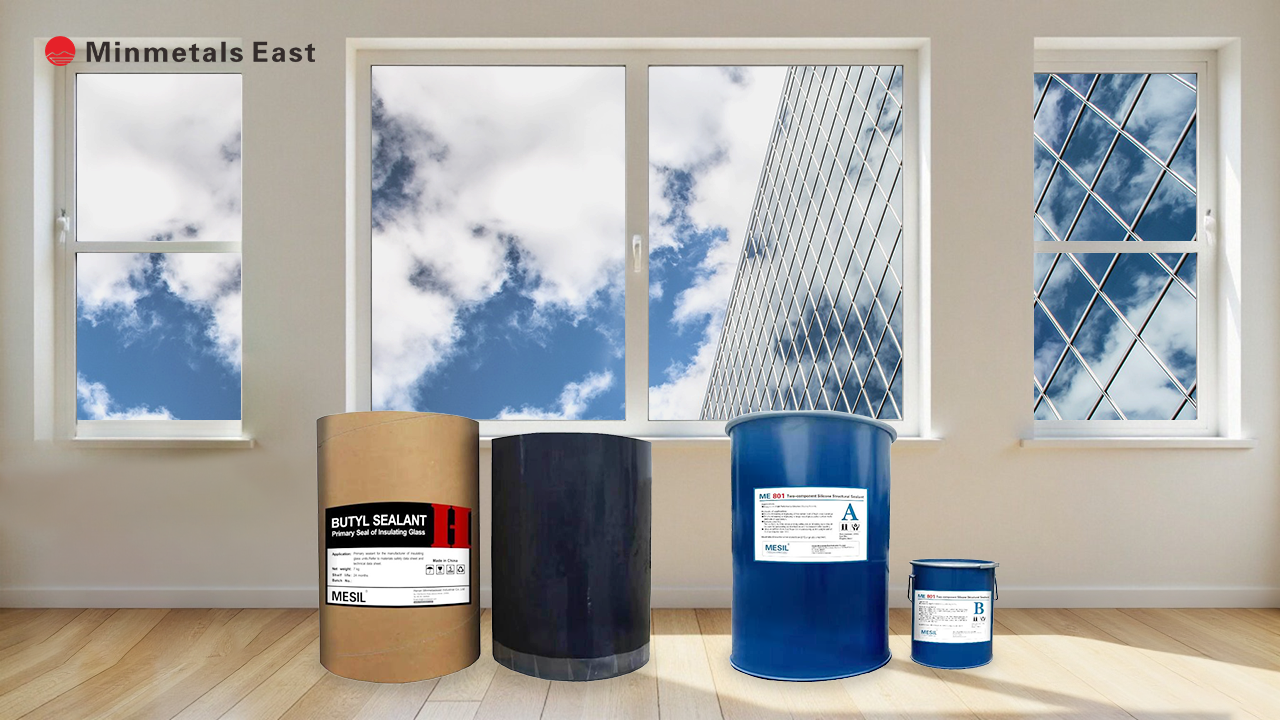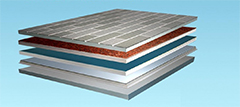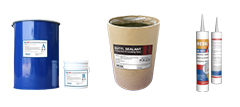Picking a sealant for glass sounds easy. But the wrong one can cause leaks, damage, or a bad look. This guide explains what works, where to use it, and how to choose the best option for any job. It uses easy words, clear ideas, and helpful tips.
Key Features: Why Silicone Works Best for Glass
Silicone has special powers that help it bond well with glass.
- It stays strong in heat or cold
- It keeps out water and air
- It bends without breaking
- It holds up under sun and rain
- It does not turn yellow too fast
Glass is smooth, strong, and beautiful. But it is also hard and does not absorb glue well. Silicone sticks to glass without the need for extra tools or treatments. And because it stays flexible, it works even when glass expands or shrinks. This makes it a great match.

Common Applications: Where Glass Sealants Are Used
Silicone is not just for windows. It is used in many glass projects—both indoors and outdoors. Each place needs a seal that lasts, moves, and protects.
- House Windows. Most home windows use silicone for sealing. It stops drafts, blocks rain, and reduces noise. A good seal helps lower your heating and cooling bills.
- Glass Walls and Partitions. In offices and modern homes, people use clear glass to divide spaces. Silicone holds the panels in place without thick frames or screws. The result looks smooth and clean.
- Cars (Windshields and Sunroofs). Cars move fast, shake, and face all types of weather. Silicone seals around windshields and sunroofs to stop wind, dust, and water. It also helps reduce road noise.
- Aquariums. Aquariums must hold heavy water and keep fish safe. Regular glue will not work. Aquarium-grade silicone is safe for animals and can stay underwater for years without losing strength.
- Skylights and Roof Glass. Skylights bring light into a room, but they are also open to the weather. They need a seal that handles sunlight, rain, ice, and snow. Silicone holds tight even on steep angles or curved glass.
- Oven Glass and High-Heat Appliances. Some oven doors and kitchen tools use glass panels. These need a seal that resists very high heat. Silicone made for ovens can handle up to 300°C (572°F) or more.
Choosing the Right Product: Factors to Consider
Before buying a sealant, check these features one by one.
- Heat Tolerance.
Some glass areas get very hot. Oven doors, stovetop panels, and skylights near the roof may face high heat daily. These areas need sealants that can stay strong under temperatures up to 300°C (572°F). If the label does not mention high-heat use, it may melt, peel, or smell bad after heating.
- Cure Type.
Curing means drying and hardening. There are two types: neutral and acetoxy. The curing type tells you how fast the sealant dries, what smell it gives off, and what surfaces it can touch. Some materials, like coated glass or steel, need neutral-cure only. Acetoxy types release acid while curing, which can damage certain surfaces.
- UV Resistance.
Sunlight contains UV rays. These rays can damage many materials over time. Some sealants crack, fade, or turn yellow after long sun exposure. UV-resistant silicone works better for glass doors, skylights, outdoor windows, and solar panel edges. Without it, the seal may wear out too soon.
- Flexibility.
Glass does not stay the same shape. It expands on hot days and shrinks on cold ones. It may also vibrate or shake during wind, storms, or use. A good sealant should stretch and move with the glass without tearing or breaking. This is especially important in cars, large buildings, and outdoor signs.
- Strength.
Tensile strength means how much force a material can hold before breaking. Peel strength tells how well the seal sticks to surfaces when pulled. Both numbers matter. If a sealant has low strength, it may fall off when the glass shifts. Good products often show strength values on the tube or the spec sheet.
- Food Safety.
Some projects involve food or water, like aquariums, kitchens, or commercial appliances. These spaces need silicone that is marked NSF-certified or FDA-compliant. This type does not release harmful chemicals and is safe around animals, food, or drinks. Do not use common household silicone in these areas.
- Color.
Sealants come in different colors. Some people want them to match the wall or the frame. Others prefer a clear finish that hides the seal. White and gray are often used in homes. Black works well with metal. Some brands also offer custom color matching for special needs.
- Reviews and Brand.
A well-known brand may cost more, but it usually gives better results. Look at customer reviews, especially those with photos. Check if people had success with your type of project—like aquarium glass, car glass, or patio windows. If many reviews mention cracking or leaks, look for another option.
Tip
Always read the label. Each product has a set of limits. Some are great with wood and glass. Others only stick to clean, flat glass. Some dry in 30 minutes, others take a whole day. The label tells you everything you need to know.
Neutral vs. Acetoxy: Which Silicone Curing Type to Choose
Silicone sealants fall into two curing types. These work in different ways. Choosing the wrong one can cause damage to your materials or slow down your project.
Acetoxy Cure Silicone
- Often dries faster
- Gives off a vinegar-like smell
- Bonds well to smooth glass
- Usually cheaper
- Not safe for metal, mirrors, or natural stone
- May cause corrosion or stains if used in the wrong spot
Use acetoxy types for simple indoor glass, like mirrors, window panes, or sealed glass boxes. Do not use them on copper, marble, or painted surfaces.
Neutral Cure Silicone
- Has a mild or no smell
- Safe to use with stone, metals, and coated glass
- Often used in buildings or outside areas
- Dries more slowly
- Costs more, but works on more surfaces
Choose neutral cure if you need to bond glass with stone, tile, or aluminum. It also works better for long-term outdoor jobs.
Interior vs. Exterior Use: Environmental Durability
The place where you use the sealant changes what features matter most. Inside and outside areas have different problems.
Indoor Use
- Less UV light, less rain or snow
- Odor may be a concern—look for low-odor types
- A clean look matters more, especially around sinks or mirrors
- Fast drying helps in small home jobs
- Less stretch is okay in places with little movement
For bathroom glass, cabinet glass, or kitchen panels, most indoor silicone will do well. But check if the sealant resists mold or mildew.
Outdoor Use
- Faces full sun, wind, rain, ice, and dirt
- Needs better UV and weather resistance
- Must expand and contract with daily temperature swings
- Needs to last years without breaking apart
- Works better if the surface is painted, metal, or exposed
Use a sealant that says “outdoor use” or “weatherproof” clearly on the tube. These types are built to survive hard conditions.
Using the wrong type outside may cause leaks, cracks, or color fading within months. For outdoor glass, always choose strength over speed.
Color Options and Visual Matching
Sealants show more than strength—they also show on your wall, glass, or frame. Picking the right color can make your job look clean and professional.
Clear Silicone
- Good for most glass projects
- Almost invisible once dry
- Works well with mirrors or frameless glass
- Can turn yellow over time unless UV protected
White Silicone
- Common in kitchens and bathrooms
- Matches white tile or sink areas
- Hides better on light-colored frames
Black or Gray Silicone
- Often used with aluminum, steel, or black glass
- Makes lines more visible but gives a bold finish
- Used in skylights or large glass walls
Custom Colors
Some brands offer color matching. This helps when working with painted metal, colored glass, or complex building exteriors.
For a strong finish that also looks good, match the color of the sealant to your surface. A well-matched line disappears from view. A bad match draws the eye and may look unprofessional.
Summary: Keep It Simple and Smart
Silicone sealants help glass stay in place, block leaks, and last longer. Know your needs, pick the right type, and match the look. A little planning leads to a clean, safe, and strong result.








